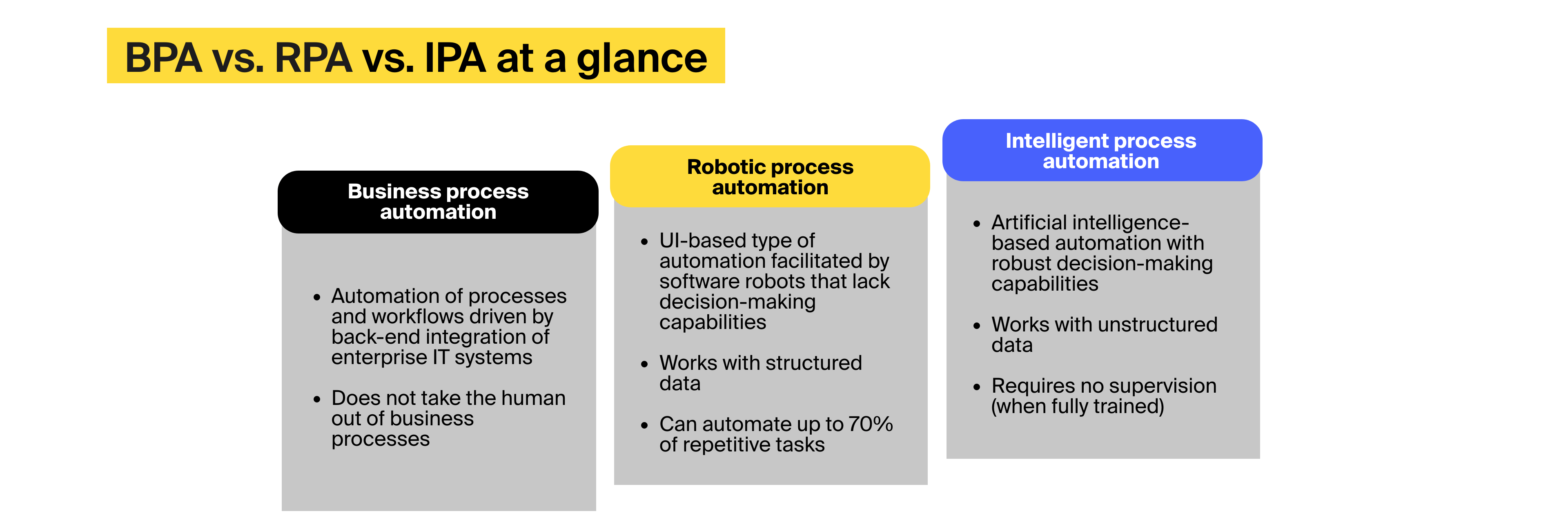Being the first step towards enterprise automation, business process automation relies on off-the-shelf or bespoke software-driven by “if-then” programming and API integration.
These systems link other applications within a company’s IT infrastructure and facilitate the movement of data across ERP, CRM, DMS, and project management solutions.
BPA software streamlines mundane work like customer account management, employee onboarding, report generation, and eProcurement.
For example, an HR department that does not leverage business process automation has to schedule interviews with candidates over the phone, manually route their papers across the associated departments, ensure document review via follow-ups, and onboard new employees.
With BPA, a candidate can simply fill out an online form, which is automatically forwarded to the company’s HR, accounting, and legal units, eliminating duplicate paperwork. During the review process, candidates are kept in the loop thanks to automatic notifications. And if the candidate is hired, the onboarding process, facilitated by a corporate learning management system, will take mere hours instead of several days.
Your company should consider investing in business process automation if your work involves:













